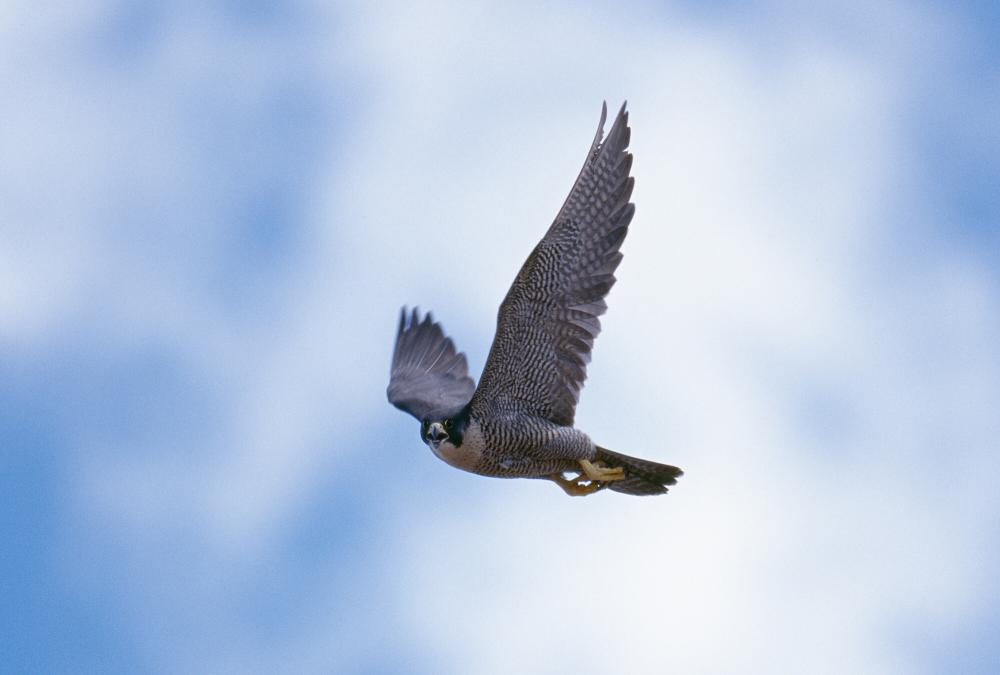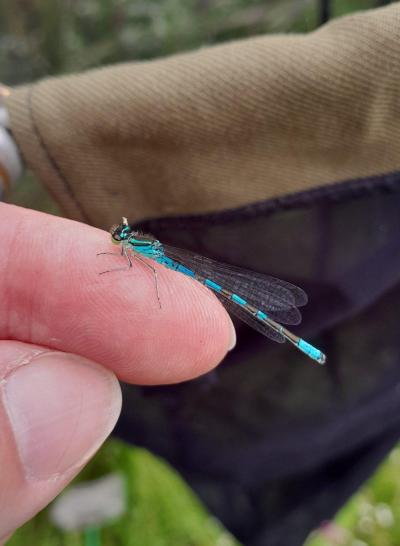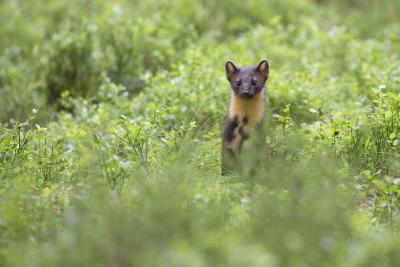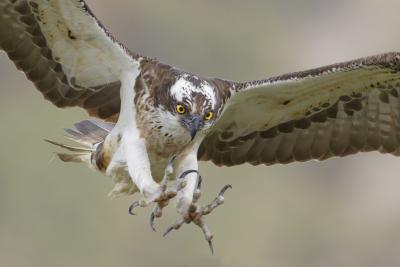Peregrine
Falco peregrinus

There are 14 species of raptor within the moorlands and forests of the Cairngorms National Park. The peregrine falcon is the fastest of them all - of all birds, in fact - and has been measured at speeds above 180km per hour when it has prey in its sights.
Factsheet
Weight: 0.6 - 1.3kg
Lifespan: 6 years
Best time to spot: Year-round, but easier to spot during the breeding season from March to July
In flight, peregrines have noticeable scythe-shaped wings that taper sharply to a point, and a short, square-ended tail, which they sometimes fan when soaring. Males (known as tiercels) and females (known as falcons) share the same colouring, but females are larger.
Peregrines are blue-grey above and lighter below, with dark barring on the chest and belly. They have a dark hood and ‘moustache’, which contrast with their white throat, and flashes of yellow appear in their striking eye ring, beak base and feet.
Like other birds of prey, the peregrine has three eyelids. The upper and lower eyelids, used for blinking and sleeping, are common to all birds. The translucent third, called the nictitating membrane, is like a set of built-in goggles. It slides over the eye to protect it as the bird dives at high speed, keeping debris out and moisture in. Peregrines also have specialised ‘tubercles’ in their nostrils to avoid lung damage from the pressure changes that happen when diving at such high speeds.
While peregrines can be found year-round in the National Park, enjoying the open, mountainous habitat, they are easiest to spot when nesting in crags during the breeding season.
Did you know?
There are 14 species of raptor within the moorlands and forests of the Cairngorms National Park. The peregrine falcon is the fastest of them all - of all birds, in fact - and has been measured at speeds above 180km per hour when it has prey in its sights.
Factsheet
Weight: 0.6 - 1.3kg
Lifespan: 6 years
Best time to spot: Year-round, but easier to spot during the breeding season from March to July
In flight, peregrines have noticeable scythe-shaped wings that taper sharply to a point, and a short, square-ended tail, which they sometimes fan when soaring. Males (known as tiercels) and females (known as falcons) share the same colouring, but females are larger.
Peregrines are blue-grey above and lighter below, with dark barring on the chest and belly. They have a dark hood and ‘moustache’, which contrast with their white throat, and flashes of yellow appear in their striking eye ring, beak base and feet.
Like other birds of prey, the peregrine has three eyelids. The upper and lower eyelids, used for blinking and sleeping, are common to all birds. The translucent third, called the nictitating membrane, is like a set of built-in goggles. It slides over the eye to protect it as the bird dives at high speed, keeping debris out and moisture in. Peregrines also have specialised ‘tubercles’ in their nostrils to avoid lung damage from the pressure changes that happen when diving at such high speeds.
While peregrines can be found year-round in the National Park, enjoying the open, mountainous habitat, they are easiest to spot when nesting in crags during the breeding season.
Did you know?
The peregrine’s prey tends to be medium-sized birds, such as red grouse, waders, gulls and pigeons, which peregrines will divebomb and ‘punch’ with tightly clenched talons. Their binocular vision, which is much better than ours, allows them to spot their prey from more than 1.5km away.
Males and females usually mate from the age of two. Once peregrines find a partner, they stay together for life, but much effort is put in on both sides before this happens.
During the courtship period, the male will attempt to impress his potential mate with a display of aerial acrobatics, precise spirals, and steep dives. Midway through the performance, he passes gifts of prey to the female in mid-air. To make this possible, the female flies upside-down, receiving the snack from the male’s talons.
The result of successful mating is three to four dark brown, speckled eggs. It’s mainly the female who incubates them, for around a month, with some help from the male. Eight to 10 days after they have hatched, both parents leave the nest to hunt for food as the chicks grow quickly. In just six days, the chicks double their weight. By three weeks old, they are 10 times their birth size. They fledge an average of 40 days after hatching but stay dependent on their parents for up to two months.













